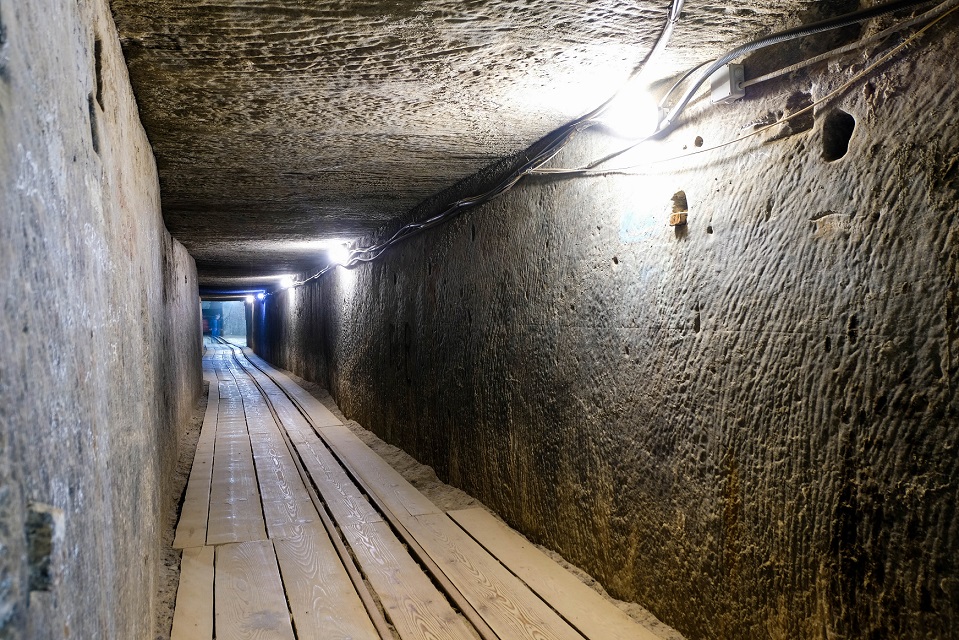Epol Soft LLC is an R&D center specializing in the development of solutions for telecommunications equipment, including software for 5G networks.
One of our clients, for whom Epol Soft LLC is developing 5G software, has shared a case study on the use of 5th generation networks in a mine for mineral extraction. The local network helps ensure safety and manage production activities.
To ensure the safety of personnel and the mining facility, it is necessary to monitor several physical parameters:
- accumulation of explosive gases, and in case of exceeding threshold values, evacuate employees and activate additional ventilation systems;
- vibration and heating of walls, which may indicate rock collapses and cave-ins in the mine;
- location of workers on different levels and areas for timely evacuation;
- opening and closing of doors to various rooms;
- use of personal protective equipment by employees.
To monitor the operation of the facility, the following data is needed:
- movement of production equipment within the mine;
- shipment and movement of ore within the mine and on the surface;
- availability and use of materials necessary for the extraction process;
- performance of production tasks related to mining and facility management.
The mining company was unable to create a unified data transmission network due to the specificity of the facility:
- equipment and personnel located on multiple levels and areas of the mine;
- inaccessibility of certain sections;
- frequent movement of workers and machinery.
The data was collected using multiple tools:
- Wi-Fi networks;
- LoRa networks;v
- wired communication systems;
- manual data collection on paper forms and transfer for processing.
The systems used had several limitations, the main one being the delay in receiving information, which made it impossible to promptly take measures to ensure safety and manage production activities.
For example, ensuring the supply of materials, tools, and equipment for mining. Previously, this data was collected manually by a mine employee. The period from data collection in the mine to the decision to make a purchase could take several months, resulting in the mining tasks being completed only about 50% of the time.
In case of emergency, there was no way to obtain accurate and up-to-date information about the location of employees and ensure a full evacuation. To organize data collection, a network was needed that would provide stable communication throughout the facility, including hard-to-reach areas and areas with relatively low employee presence. It also needed to provide real-time information transmission.
The optimal solution, considering the specificity of the facility and the requirements, was the use of a local network that includes the following 5G equipment:
- Sensors, cameras, temperature sensors, trackers, counters that generate voice and video data, telemetry data.
- Executive devices: modems, gateways.
- Stationary and portable base stations.
- NR-UE subscriber stations.
- IMS multiservice platforms.
- A system of servers for data collection, processing, storage, and visualization, including equipment for creating a “digital twin” of the enterprise.
- A set of server equipment hosting the core network, multiservice platform, and positioning platform.
After implementing the 5G network, all data is collected by sensors and transmitted digitally to dispatchers and monitoring personnel. The use of the 5G network has allowed to increase safety levels in the mine. The number of evacuations related to exceeding the concentration of explosive gases has decreased by 40%, and all evacuations have been executed by relocating all personnel to safe areas.
The performance indicator for completing production tasks has increased. Thanks to fast transfer of data on the need for materials, tools, equipment, and personal protective equipment, the information is promptly sent to the responsible employee, bypassing data collectors and accountants, resulting in a 90% timely completion rate of production tasks.
In addition, the use of 5G network and the promptness of information retrieval create conditions for developing a digital twin of the company and production processes – a virtual prototype of the company, which will allow for:
- modeling production processes and finding the most efficient solutions for resource utilization;
- seeing and predicting risks in advance;
- forecasting the development of the situation taking into account multiple factors.
The plans of the company that operates 5G equipment include the development of a system for interactions with the ERP software complex in several fields:
- planning the need for network components using ERP since 5G equipment becomes as much of a production resource as equipment and mechanisms;
- developing solutions that allow collected data to be loaded into ERP to ensure the speed and reliability of reflecting indicators in the accounting system.
In addition to mines, 5G networks are used in other types of objects:
- industrial enterprises for collecting data on the degree of equipment wear and tear and individual modules for planning equipment maintenance and repair;
- housing and communal services system for collecting data from meters and remote equipment management;
- logistics centers and ports for analyzing the movement of valuables and managing mechanisms;
- medicine for remote management of medical equipment and experimental remote operations.
Our 5G software development cases and other projects in telecommunications can be viewed here.
Follow us on our social networks!

